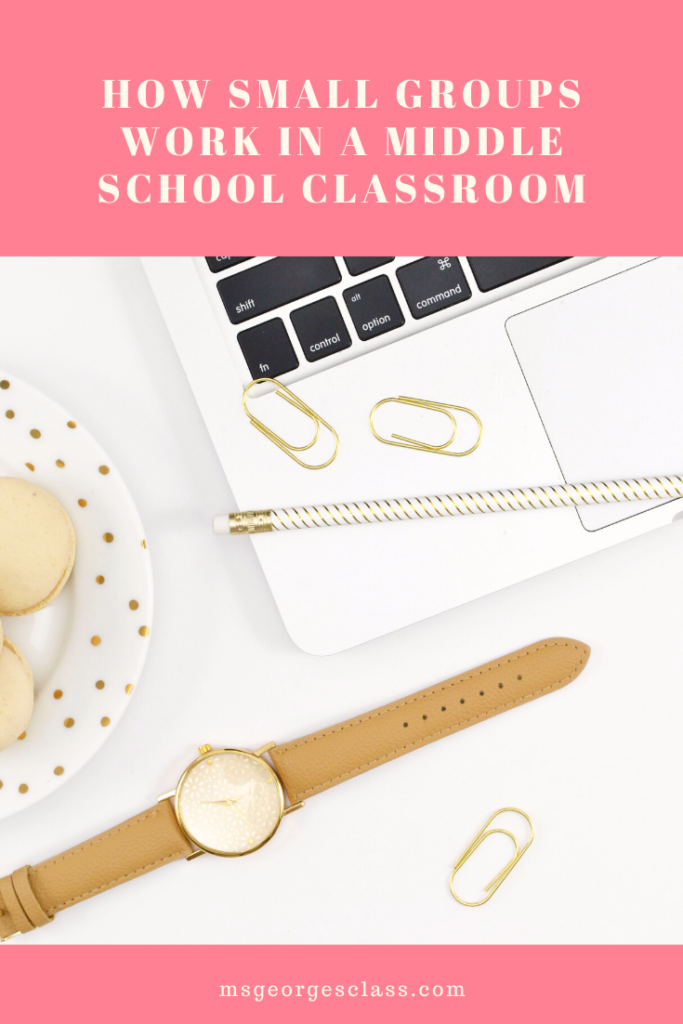
Four teachers met in a circle discussing the direction of the reading lab. For three months, I had created lessons for the reading lab classes, using the same formula from the previous year. Now, the 7th and 8th-grade teachers, along with the teacher leader, who is also a language arts teacher, were brainstorming how the class should function. At the end of the meeting, we decided that students would work on the reading program MindPlay for two hours each week and work in small groups according to their MindPlay scores. Small groups, which is supported by the Marzano’s strategies, can be very complicated because of classroom management, differential instruction, and accomplishing the objective.
Classroom Management
During the first few weeks of school, I put a strong emphasis on classroom management. I read Classroom Management that Works: Research-Based Strategies for Every Teacher by Robert J. Marzano, and I created a syllabus that thoroughly discussed class policies and rules. Because of my dedication to classroom management, my students quietly worked on MindPlay each day for thirty minutes. The new expectations were to have the students complete two hours of MindPlay per week and interact with each small group once a week. When the changes were made for the reading lab class, I decided to have students sit in a semicircle with me facing them.
Having the student sit in a semicircle allowed me to have my back towards a wall, and I was able to interact with the small groups. I quickly noticed the students who were not in the small groups wanted to interact with me or the group. When I would give a small group all my attention, there were one or two students being disruptive. They were not focused on MindPlay, and they performed attention-seeking behaviors such as laughing out loud. The semicircle lasted for a week. I quickly returned to my desk, where I was able to watch students on GoGuardian and had detention slips close by. The behavior I witnessed during the semicircle quickly disappeared. I had students sitting in rows of three chairs by my desk. I assigned them an article to read, purposely use metacognitive markers, and then we would discuss the passage. Also, students focused more on reading the passage and then there was a small discussion. Sometimes, I would provide direct instruction for students that are in the small groups, but for the most part, the classroom environment is quiet for learning.

Differential Instruction
The reading lab classes are a mixture of 7th and 8th-grade levels, ranging from 3rd grade to 10th-grade reading levels. I have three classes, with my largest class having 14 students. In the first week of implementing the changes, I had four different copies of four articles with questions. I had an article for the 7th-grade critical group, 8th-grade critical group, 7th meet expectations group, 8th meet expectation group, and I did not meet with the students that exceeded expectations for the first week. The workload was too much, so I combined the 7th and 8th-grade critical group weekly articles and combined the 7th and 8th grade meet expectations and exceeded expectations articles. I used the district’s approved website Zinc, from the makers of Springboard. On the website, I was able to find articles that were aligned with the students’ Springboard Worktext, articles that focused on the state standards and specific reading levels.
The articles from Zinc are of high interest and from national publications. A few weeks ago, I created an objective roadmap, which you can read about on my blog here. I began having each small group reading the appropriate article, but each group had to answer two questions from the “reading for informational text” state standard. The critical group improved on the reading program, MindPlay, but they also began to answer questions such as why the author wrote this article. The meet expectations groups were challenged because the articles were more challenging and abstract. For example, students in the meet expectations group read an article about the neuroscience of deep reading versus skimming text. The scientific jargon did not make students afraid, and they were able to identify three pieces of textual evidence that supported why the author wrote the text. The critical students read two commencement speeches, one delivered by Steve Jobs. I noticed that students struggled with the vocabulary word commencement, which made it difficult for them to identify why the writer wrote the speeches. Although the critical students struggled, they still attempted to explore new reading passages (nonfiction). Now if I can get everyone to stop saying, “in the story,” or “she explained,” although it is an article and a man wrote the speech.
Accomplishing the Objective
Each small group had two objectives from the Ohio state standards. Reading: Informational Text 7.1-2. Standard R.I. 7.1 states, “Cite several pieces of textual evidence to support analysis of what the text says explicitly as well as inferences drawn from the text,” and 7.2 “Determine two or more central ideas in a text and analyze their development over the course of the text; provide an objective summary of the text.” I addressed these two standards with the whole class on Monday, and when students were in their small group, we discussed the vocabulary from the standards and what each standard was asking the students to perform. During each small group, the students had to cite textual evidence showing why the author wrote the article and identify the central idea of the article.
Before students read the article, I encouraged them to use metacognitive markers while they read the article. One student that was in the meet expectations group used the markers and was able to get every question correct. He wrote in the margins and was able to return to the notes to answer the questions correctly. I instructed the critical readers to write four notes within the article’s margin and to use four of the metacognitive markers. The critical readers still struggled with answering the standard questions without help. My next step is to do an expert think-aloud with the groups. Think-alouds have been proven to help students model how to read and analyze a passage.
Within the small groups, students were able to cite one textual evidence of why the author wrote the passage and identify one central idea. Each article had three to four questions related to the standards. The students in the meet expectations group were able to get every question correct. The students in the critical level struggled with the answers. Did the students accomplish the objective? The students in the meet expectations groups were able to answer the questions generated from the article correctly. However, when asked to cite three pieces of textual evidence showing why the author wrote the article, they struggled to cite textual evidence. Many students wanted to put the reasons in their own words without using the text. This is a standard we need to work on. The critical level students struggled with the questions from the article along with the standard based questions.
Do Small Groups Really Work in Middle School?
Before, I was skeptical of small groups because of the classroom management component, and I have never seen it in middle school or high school. Now I’m a believer that it works. My students are getting small group attention (3-6 students) and are completing assignments on their reading level. For small groups to be successful, a teacher does have to have great class management; otherwise, students will be off-task while you are with the small groups. The semicircle did not work for me, although I faced my whole class. Sitting at my desk with GoGuardian and detention slips worked for me better. I expected my students to work quietly while I devoted my attention to the small group. I also created differentiated instruction for two groups of students, the students that met expectations and the students that scored critically. I chose articles that were based on the two state standards and reading level. Each group had had the same state standards, but they were assessed using different articles. The critical level students’ articles were not as challenging as the other group. The students that met expectations articles were given articles with high-level vocabulary, abstract concepts, and one article focused on neuroscience, and students accepted the challenge. Can small groups work in upper grades? Yes, but only if you set a plan to succeed.






Leave a Reply